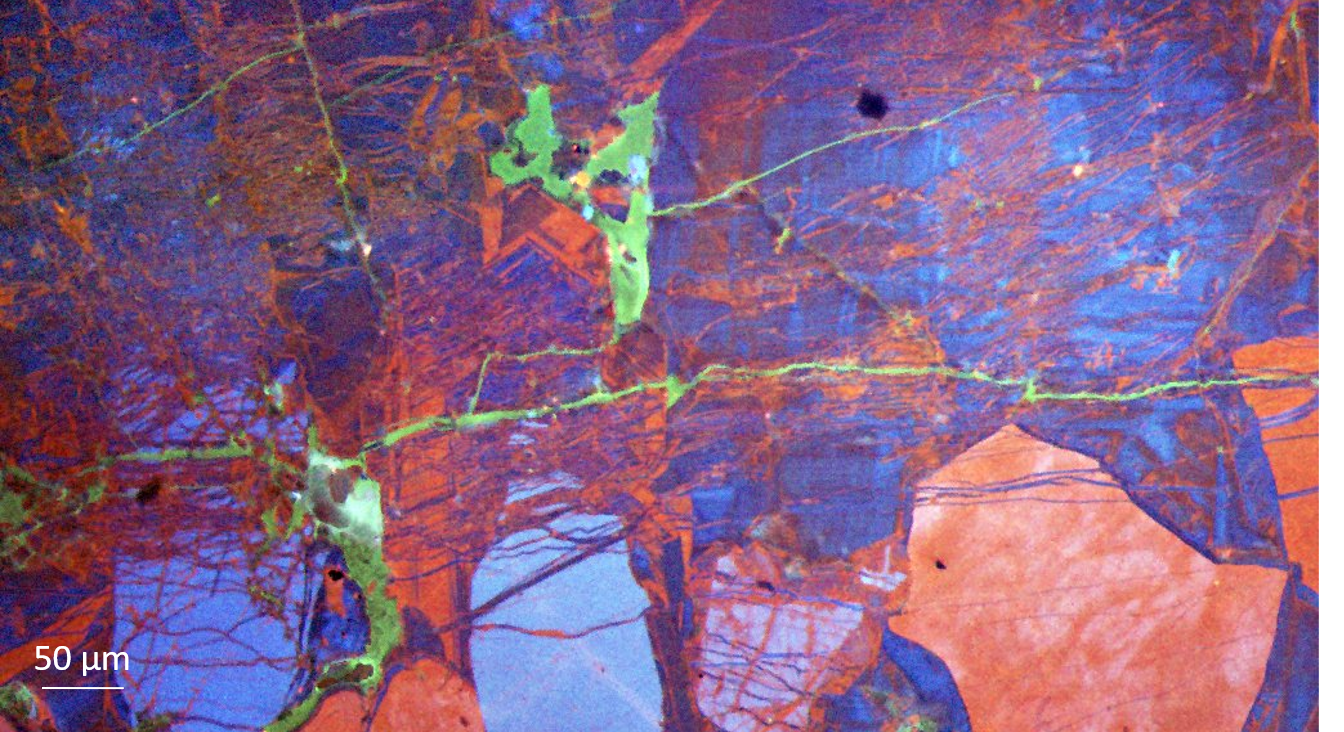One of the most important applications of cathodoluminescence (CL) in geosciences is the possibility of revealing internal structures, growth zoning, and lattice defects in quartz crystals that are not discernible by other analytical techniques. During quartz crystallization, variations of the physicochemical conditions result in crystal zoning. Revealing these features using CL enables geoscientists to reconstruct the specific growth conditions or to reveal multiphase processes. The zoning in quartz can relate to variations in trace-element uptake or intrinsic defects caused by the effects of growth conditions.

Provenance
The dependence of the CL spectrum (color) of quartz from different origins permits the recognition of specific formation conditions (e.g., temperature and pressure). Qualitative studies encompassing a wide array of quartz forms have enabled a general provenance classification to be built based on the CL color, with guidelines in place for the classification as volcanic, plutonic, hydrothermal, and metamorphic quartz fabrics. However, in combination with other analytical methods such as trace-element analysis, isotope, or inclusion studies, it is often beneficial.
The concentration of titanium in quartz is widely demonstrated as a valuable tool for determining the temperature and pressure of quartz crystallization (the so-called TitaniQ method). Qualitative studies show that blue wavelengths could be associated with titanium concentration. However, more recently, it has been noted that spectrum imaging (hyperspectral imaging) approaches are necessary for accurate quantitative analysis.
Diagenesis
CL maps are useful for reconstructing diagenetic processes in reservoir quartz since authigenic and detrital quartz can be distinguished, as well as secondary overgrowths, ghosts of the original fabric, and cementation sequences. Such observations are important for discerning various geological and mineralogical aspects, particularly in oil exploration.
Metamorphism
CL is useful for unraveling deformation features (e.g., microfractures) or fluid migration pathways in crystalline and sedimentary rocks. For instance, it has been demonstrated that CL is an excellent tool for distinguishing brittle or ductile deformation processes during sandstone diagenesis. On the other hand, CL can reveal fluid migration due to hydrothermal alteration or pro- and retrograde metamorphic conditions often not recognized by conventional polarizing microscopy.